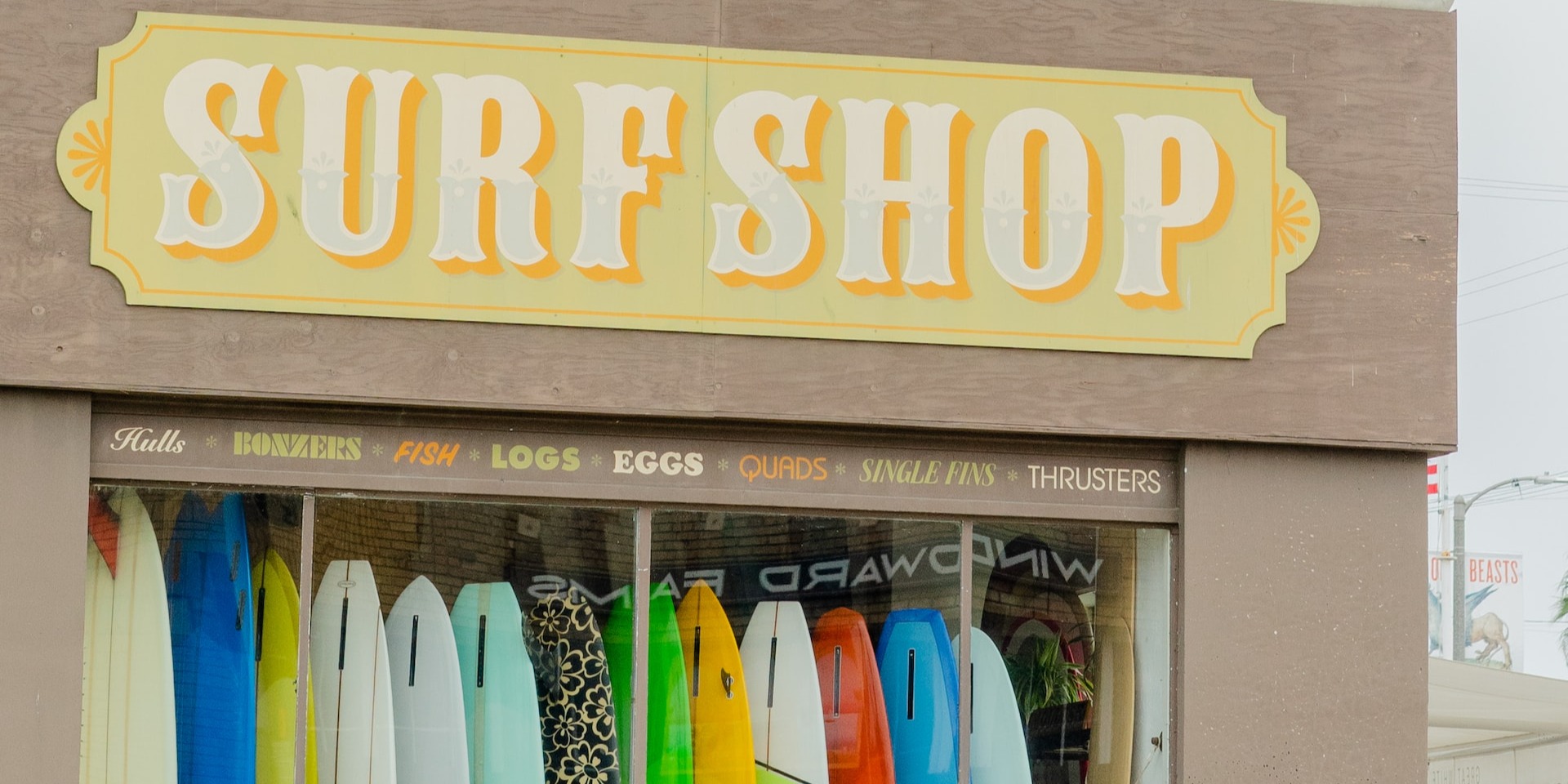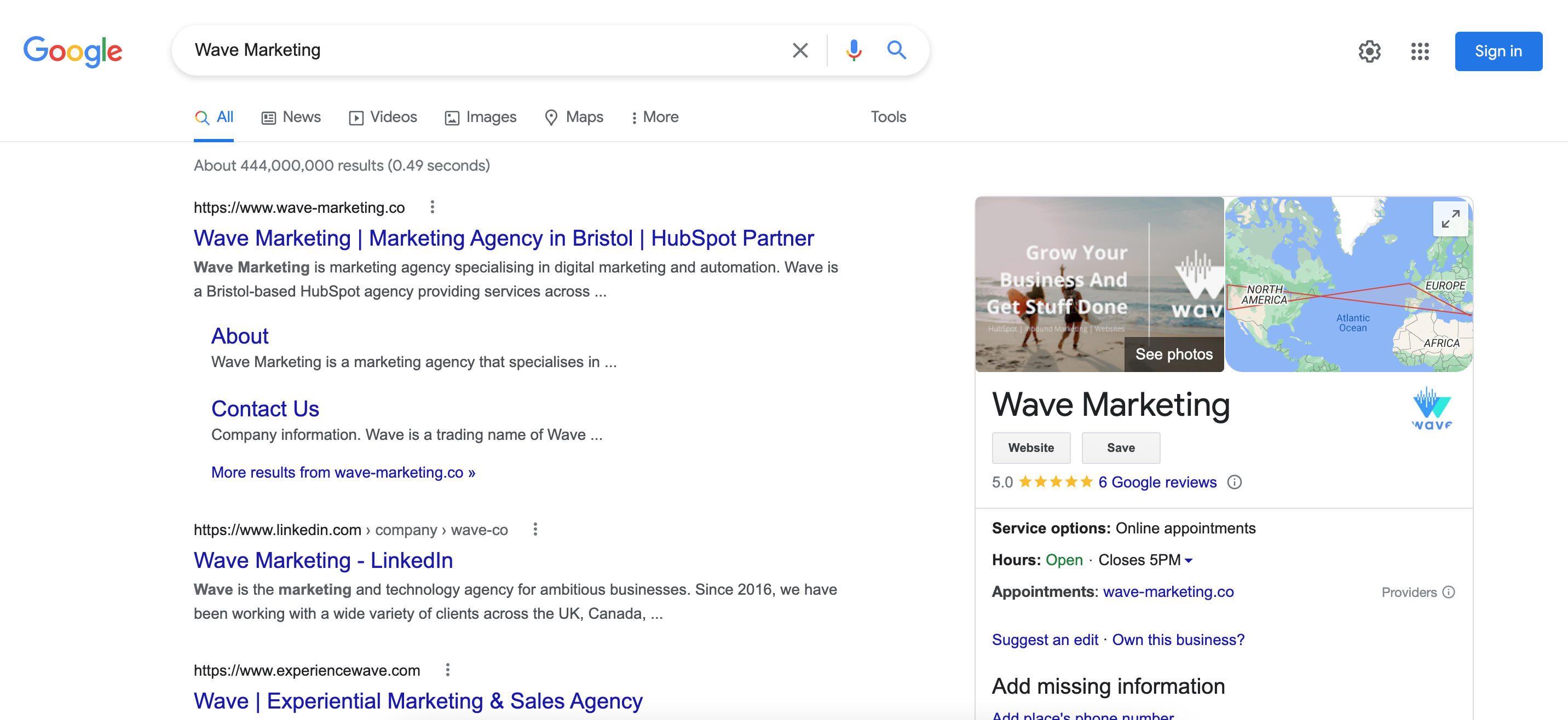The Best Strategies For How To Do Local SEO In 2023

Share this post
Struggling to get footfall into your shop or cafe? Losing local plumbing, locksmith or electrician jobs to people outside of your area? Then you need to get to grips with local SEO.
Local SEO is vitally important for small businesses. 46% of all of Google Searches are looking for local information (GoGulf). If you’re not optimised for local search, you’re missing out on local opportunities.
→ Check out our Ultimate Guide to Search Engine Optimisation
Now you’re probably wondering what tools for local SEO are out there? How is local SEO different from organic SEO? Don’t worry. Wave has put together this comprehensive guide on local SEO tactics and tools. It will help you optimise your site and be ready for 2023!
By the end of this blog, you will have a firm grasp of local SEO and how it can help your small business or your local branches reach more local customers.
What is local SEO?
A branch of search engine optimisation (SEO), local SEO involves improving your search visibility to customers in your local area. This can be your post code, or your town or city. It is primarily for brick and mortar stores or offices, and is designed to increase web traffic from your nearby areas.
Can non-brick and mortar stores benefit from local SEO too?
Yes! While local SEO is more tailored to people with physical locations, if you’re an online only platform or a freelancer without an office, you can still set your local SEO up to improve your chances of reaching nearby customers. Read on to see how!
An example of local SEO?
Want an example of local SEO? OK! Let’s say you’re a cafe and you want more people to try your delicious coffee. You need to not only get them to you, but let them know you’re out there. Now, we know that most people in need of a coffee will Google “cafes near me”. Through your address, social profiles and other signals, local SEO makes you appear here. Google now knows to suggest your business to the nearby customer.
You can use local SEO to position your business in front of prospects and customers.
→ Learn about Wave’s SEO work with Cheshire cafe chain Ginger & Pickles
Local SEO Tactics
1. Optimise your Google My Business

Google My Business should be the core fundamental of your local SEO efforts. While other search engines exist, 92% of all internet searches are made on Google (Statista). It should be your priority.
Google prioritises its own content and shares it generously with its own users. To be optimised for Google My Business, you will need to:
- Create and verify your own Google My Business page
- Use Google Posts
- Encourage customers to share reviews
- Respond authentically to reviews – say thank you to praise and acknowledge criticism. A perfect response is: “Thank you for your feedback on [product/service] in [town/city]. We value your response and can’t wait to work with you again.”
You shouldn’t just do this for local SEO purposes. An optimised Google My Business page, with up-to-date contact information and opening hours improves the overall customer experience. You want them to find you with no friction.
2. Engage in social media
Google is putting more and more emphasis on social media. Share content and respond to posts relevant to your business.
Better yet, share your Google My Business page and ask for Google reviews through your social media channels – this aligns your search and social for greater success.
3. Make sure you take a NAP on your website for local SEO
OK not a literal nap. But it’s important to remember the NAP acronym when it comes to local SEO.
- Name
- Address
- Phone number (with area code)
Pro tip: make sure your address, name and number are consistent across your website and other digital marketing channels. If search engines, or potential customers, can’t determine what information about your business is correct, they might not show your business at all.
4. Place your NAP in your website footer or header, and the contact page
By placing your NAP in either the footer or the header of your website, you are making sure your details are on every page search engines can crawl. You should also include it on your contact us page to let Google know you are being authentic about your business and are reachable.
Pro tip: Make sure your NAP is typed and is text. It is foolish to add your NAP as part of an image because search engines cannot crawl images for text.
5. Optimise directories for local SEO
If you’re advertising your business on any online directories such as yelp, TripAdvisor or local alternatives, make sure your entries are consistent and accurate.
As mentioned above, discrepancies could lead to you being penalised. Double check all entries for spelling mistakes, unnecessary abbreviations or incorrect phone number. You should also remove any duplicate listings, and get a local chamber of commerce membership to earn a localised backlink.
6. Add location pages to your website
A lot of the SEO tips above seem aimed at one-branch local businesses. But, what if you have multiple branches or serve multiple locations?
You should create a page for every branch you have. Your pages should contain your NAP, as well as each store’s opening hours, unique descriptions, parking/commute information, promotions and any great reviews the branch has received.
However, you must differentiate your pages and include local references and waypoints. If your copy is too similar per page, search engines could penalise you.
Can you create multiple Google My Business pages?
You sure can! You can hang multiple branches under one headline Google My Business page. This unites all the branches that are part of your brand but allows them to have their own reviews, interactions with customers and NAP.
7. Create local content
Even with local SEO, content is king. The Google algorithm continues to get smarter and prioritises content that is written by humans.
You can make your content more human and more local by writing about topics close to your local community’s heart. Reflect on the local news and how your business relates to the news.
Work with your local chamber of commerce or council to become a local authority. Share local news, highlight your employee’s success and promote industry gatherings.
Want an example? Say there is a series of break-ins in your area and you’re a locksmith. Write about how people can better protect their homes and update them about how the story is progressing.
8. Participate in your local community
The more you and your company participates in the local community, the more digital PR and kudos you will receive. Organise volunteering days, partner with nonprofits and sponsor events (online ones too!). Get in front of the local media and become a trusted authority.
9. Make your site mobile friendly
The majority of local SEO searches take place on mobiles. Why? Well, most people get hangry and want to know where the nearest place to grab food is when they’re out and about. As mobile searches have increased by 250% in the past 5 years (Google), and that 61% of Google searches are done on mobile devices (Statista), you can be punished if you don’t prime your user experience for mobile. Lots of website tools like HubSpot or Squarespace create responsive designs that automatically make your website mobile friendly.
Wider, organic SEO tips that can help your local SEO
There are also techniques you can use for your entire website, regardless of location, that will improve your local SEO rankings.
1. Internal linking structure
Your internal linking infrastructure will also support your local seo efforts. Strong internal linking improves the user experience, helps them navigate your site and find the information they need.
2. Backlink for local SEO authority and relevance
Backlinks are inbound links from other websites to your website. If you’re interacting with your local community, becoming a local authority, you will pick up links directing people to your website. Backlinks are one of the most important general SEO tactics to get right.
3. Optimise your URLs, meta-descriptions, title tags, and content
The more specifications you add to your keywords, the more successful your geo-targeted content will be. For example, “preschools” is less specific than “preschools in London”. “Preschools in London” is less specific than “preschools in Hammersmith”. If you lived in Hammersmith, what are you most likely to search for? It’s important you use local keywords to rank near your customers.
As with standard SEO practice, you should include your keywords in your:
- url
- the meta-description
- the title
- the on-page headers
- throughout your copy
.gif?width=1440&name=Images%20CTAs%20for%20Lead%20Gen%20Resources%20(6).gif)
Want help with your local SEO?
Wave is a team of marketing experts and SEO specialists. We’ve helped small businesses around the globe improve their localised content and rank in their communities. This includes cafes, chalet companies and tech companies with multiple branches in the UK.
If you think you can benefit from our expertise, contact us today!





